Guide to Install the Coupling/ Nozzle Holders to the Hose
Guide to Install the Coupling/ Nozzle Holders to the Hose

If you are a contractor, two main problems you don’t want at a job site are accidents, and equipment deteriorating too quickly. A considerable risk is any malfunction that can happen involving compressed air. Blast hoses typically wear out near the coupling or nozzle holders. Pressure escapes through cavities formed by an improperly fitted coupling. Therefore proper installation of the blast couplings or nozzles into the blasting hose is very imperative.
Here are some steps to ensure the proper and safe installation of your blast coupling or holders.
Step 1: Make sure you have the proper size of blast hose and blast couplings
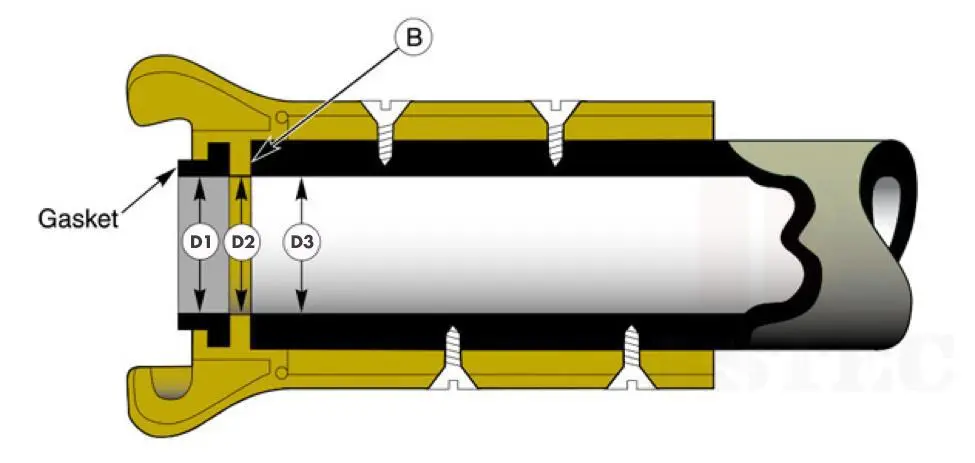
Blast Hose Bore (D3) should be equal to (or smaller than) the Flange Bore (D2) and the Gasket Bore (D1). This will ensure the coupling does not wear prematurely, leaving the gasket unsupported and prone to leaks. For any blast hose with a bore greater than 1-1/4" (32mm), use large-bore couplings.
Step 2: Cut the blast hose square
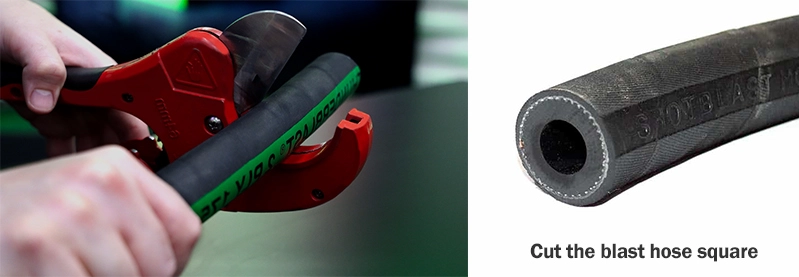
Hose ends generally are not square from the factory. We need to use a hose cutter tool to cut the blast hose square. This is important that the ends of the blast hose are cut clean and squared (flat) so that we can prevent future coupling premature leakage and wear.
Step 3: Sealant inside of the blasting coupling or nozzle holder
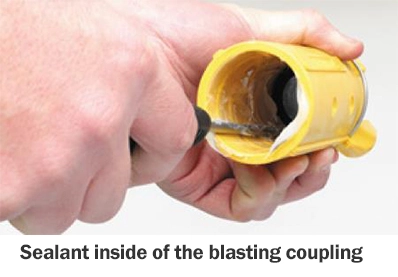
To create an air-tight seal, it is advised to use a sealant inside the coupling or nozzle holder. Instead of using as adhesive glue to secure the hose to the coupling, its main purpose is to seal air gaps. And make sure this optional sealing compound has properly cured before you introduce pressure into the hose.
Step 4: Install the coupling or nozzle holder
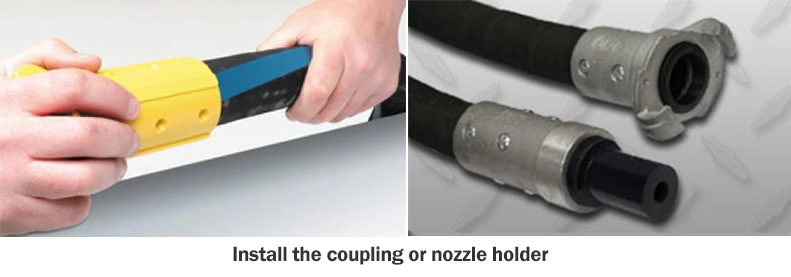
Turn the fitting clockwise, as if screwing it onto the hose until the hose end sets firmly flushed against the coupling flange or the bottom of the threads.
COUPLINGS: The blast hose must be inserted until it bottoms out completely.
NOZZLE HOLDERS: The blast hose must be inserted until it is flush with the bottom of the threads.
Step 5: Clean away any excess sealant compound from the inside of the hose
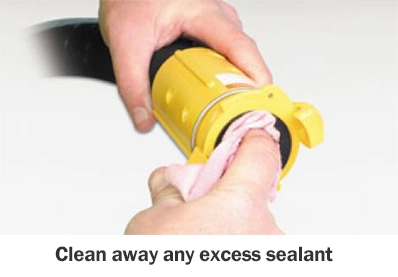
Step 6: Inspect for gaps between the end of the hose and the coupling’s lip
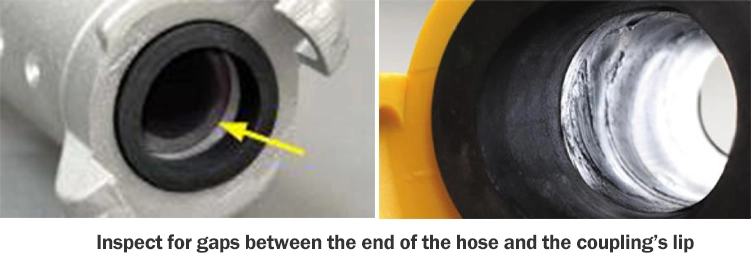
Check that the blast hose is flush against the coupling all the way around verifying it has been cut square and inserted completely.
Step 7: Install Screws
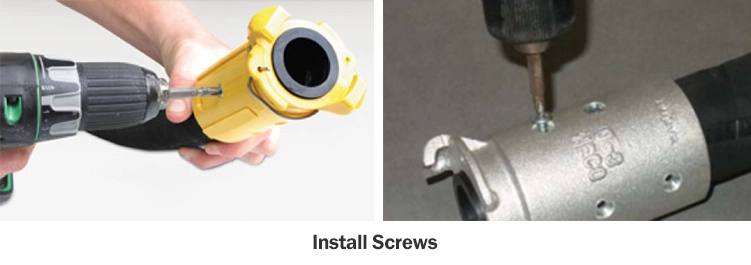
Using a power drill, install screws. Continue to spin screws 2-3 turns beyond the screw head meeting the coupling/nozzle holder to ensure the hose is pulled tight against the wall of the coupling until the hose has been drawn back to the coupling. But do not over tighten and never use screws long enough to pierce through the entire hose into the blast stream, otherwise, it will offer escape paths for air pressure which will promote premature wear or failure.
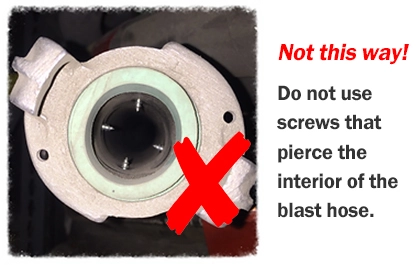
Step 8: Install safely devices (blast couplings only)

Install a safety clip with a lanyard and a safety whip-check. Blast hoses that come uncoupled while pressurized are a dangerous safety hazard.













